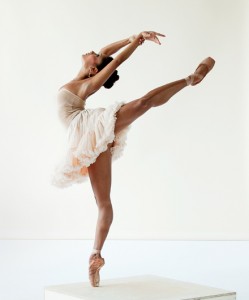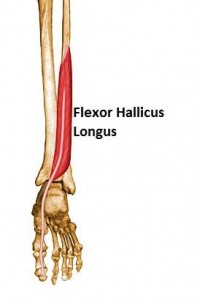 Dance is a sport that combines athleticism with artistry. Dancers put a large demand on their feet and ankles. Their unique injuries are largely due to the extreme positions of the ankle and foot joints necessary for dance, combined with long hours of practice. Dancing on the tips of the toes like in ballet or up on the balls of the feet (ankle plantar flexion) puts a lot of strain on both the ankle and foot joints. Doing this for several hours a day and 4-6 days a week can create excessive load on those joints and leave the dancer susceptible to injury.
Dance is a sport that combines athleticism with artistry. Dancers put a large demand on their feet and ankles. Their unique injuries are largely due to the extreme positions of the ankle and foot joints necessary for dance, combined with long hours of practice. Dancing on the tips of the toes like in ballet or up on the balls of the feet (ankle plantar flexion) puts a lot of strain on both the ankle and foot joints. Doing this for several hours a day and 4-6 days a week can create excessive load on those joints and leave the dancer susceptible to injury.
Some unique and fairly common overuse injuries that occur in dancers are:
- Big toe issues – flexor hallicus longus tendonosis
- Ankle issues – anterior and posterior ankle impingement syndromes
- Foot issues – stress fractures especially to the second and fifth metatarsals
Big Toe Issues
 The flexor hallicus longus (FHL) muscle runs along the fibular side (outside or lateral portion) of the leg, crosses to the medial (inside) aspect through the tarsal tunnel and the tendon attaches to the plantar (underside) surface of the great toe. This attachment site of the FHL tendon is prone to injury especially in dancers feet due to the position their feet are in constantly (up on the balls of their feet). This can create pain and tenderness in the great toe especially around the sesamoid bones located at ‘the ball of the foot’ at the great toe. In the plantar flexed position the FHL is shortened and can also contribute to foot and ankle pain. An effective way to treat this tight and overworked muscle is with soft tissue mobilization of the FHL. At Back to Function, we use a very specific manual technique to release the excess tension in the FHL. The muscle and tendon will usually be very tender during the first 3-4 passes of treatment application but then will start to release. Post-treatment the dancer will usually be very surprised at how much the FHL muscle release will open up there range of motion and decrease their big toe pain.
The flexor hallicus longus (FHL) muscle runs along the fibular side (outside or lateral portion) of the leg, crosses to the medial (inside) aspect through the tarsal tunnel and the tendon attaches to the plantar (underside) surface of the great toe. This attachment site of the FHL tendon is prone to injury especially in dancers feet due to the position their feet are in constantly (up on the balls of their feet). This can create pain and tenderness in the great toe especially around the sesamoid bones located at ‘the ball of the foot’ at the great toe. In the plantar flexed position the FHL is shortened and can also contribute to foot and ankle pain. An effective way to treat this tight and overworked muscle is with soft tissue mobilization of the FHL. At Back to Function, we use a very specific manual technique to release the excess tension in the FHL. The muscle and tendon will usually be very tender during the first 3-4 passes of treatment application but then will start to release. Post-treatment the dancer will usually be very surprised at how much the FHL muscle release will open up there range of motion and decrease their big toe pain.
Ankle Issues
If ankle injuries like simple sprains are left untreated the biomechanics of the ankle can change creating more stress on the other ankle and foot joints. The ankle issue can progressively worsen and become unstable as the body’s reaction will be to swell in order to protect the area. This can create a further issue of anterior or posterior ankle impingement. Anterior or posterior ankle impingement can become problematic due to the lack of range of motion in the ankle. Again we will see biomechanical changes in the ankle and foot to accommodate the injury. Also with chronic impingement and swelling the nerves and vascular supply to the ankle and foot can be compromised, which can become a medical emergency.
Foot Issues
In some cases the development of a stress fracture is possible due to the high demand on the bones of the foot with long practice hours either barefoot or in ballet slippers. A combination of the ankle and foot biomechanically changing to compensate with the repetitive motion of forced plantarflexion can create bone edema and a bone stress response. When the bone is inflamed the only way to heal it is to no longer load it. Meaning, no more weight-bearing activity and in most cases either a cast or boot for several weeks to allow the bone to heal in hopes that it does not fracture completely.
Taking a Functional Holistic Approach
Looking not only at the ankle and foot, but also assessing how the trunk, pelvis, hips and knees play a role can provide useful information to help correct the dysfunction. A good sports doctor will assess the injury, note altered biomechanics and postural compensation patterns, and then ‘unwind’ these changes with proper restorative exercises and manual therapies. The whole kinetic chain should be addressed in these types of injuries. Understanding the biomechanics of the positions in dance and demand on the lower extremity allows for the correct diagnosis, effective treatment, and provides the dancer with a better base of support throughout their lower extremity. This will not only allow the injured dancer to get back to dancing, but provide them with more stability, preventing future injuries.
If you need help with a foot or ankle issue, please call us at 310-534-1900 or email info@backtofunction.com to feel, recover and perform better today!


